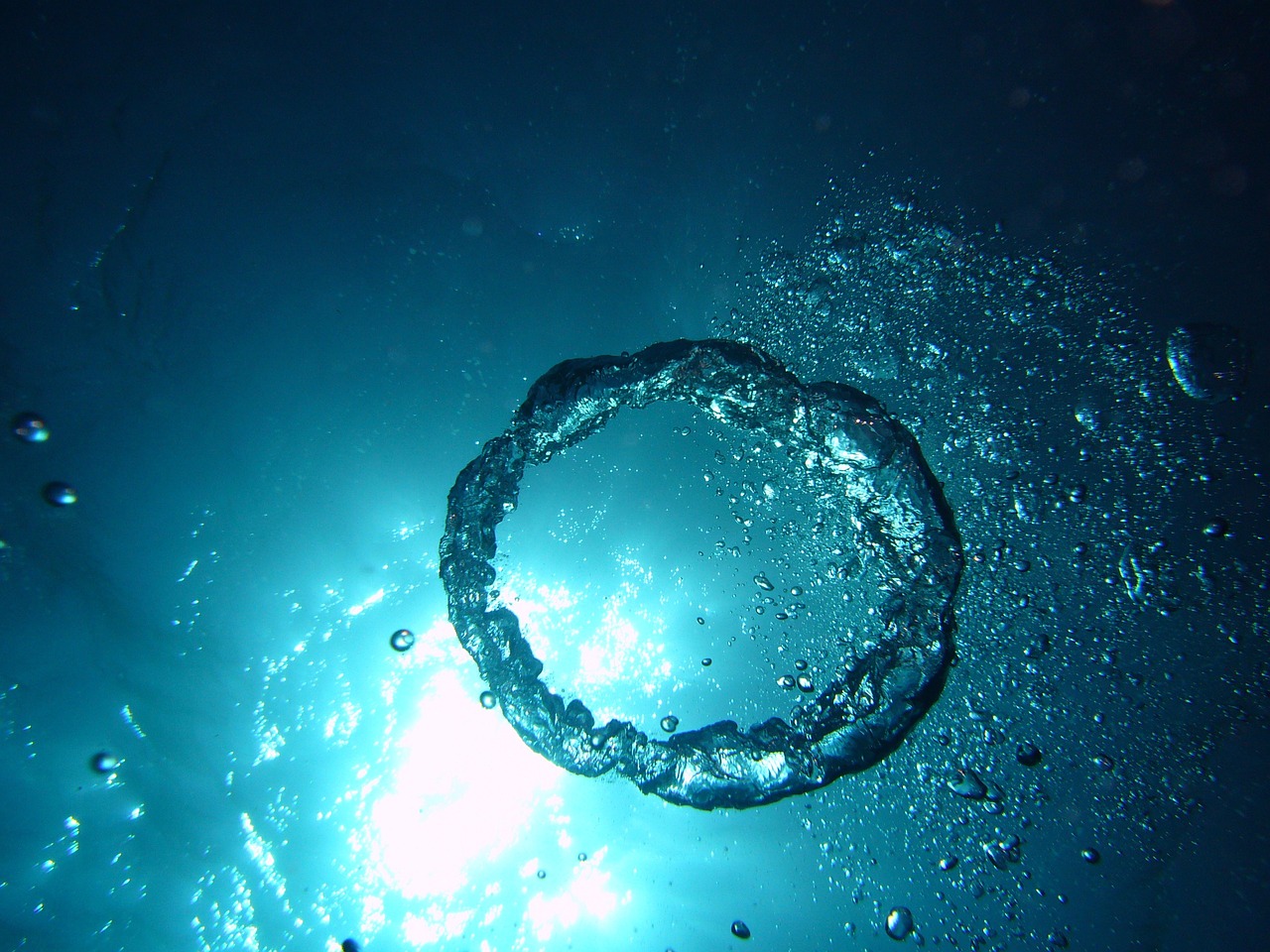Have you ever witnessed those captivating air-filled circles gracefully dancing through the water?
They are known as bubble rings, and they possess an alluring charm that captures the imagination of swimmers and swimming audience worldwide.
In this blog article, we will explore all you should know about bubble ring and explore the techniques that will help you master this mesmerizing art form.
Whether you’re an experienced swimmer seeking a new challenge or a curious beginner looking to add some magic to your aquatic experiences, this guide is your gateway to creating captivating bubble rings underwater.
From the formation of a bubble ring to the delicate manipulation of air to master the art of making a bubble ring, we will reveal the mysteries behind the occurrence of a bubble ring under water.
You’ll discover the scientific principles that make bubble rings possible, while also learning the essential skills and tips to become a skilled bubble ring artist.
So, get ready! Take a deep breath, and let’s embark on this interesting journey together.
Why Learn the Art of Making Bubble Rings?
You may wonder, what’s so special about bubble rings? Why should swimmers invest their time and effort in mastering this skill?
Well, apart from being undeniably attractive and fascinating to watch, bubble rings offer a multitude of benefits for swimmers of all levels.
Creating bubble rings underwater is an exciting way to improve your breath control and lung capacity.
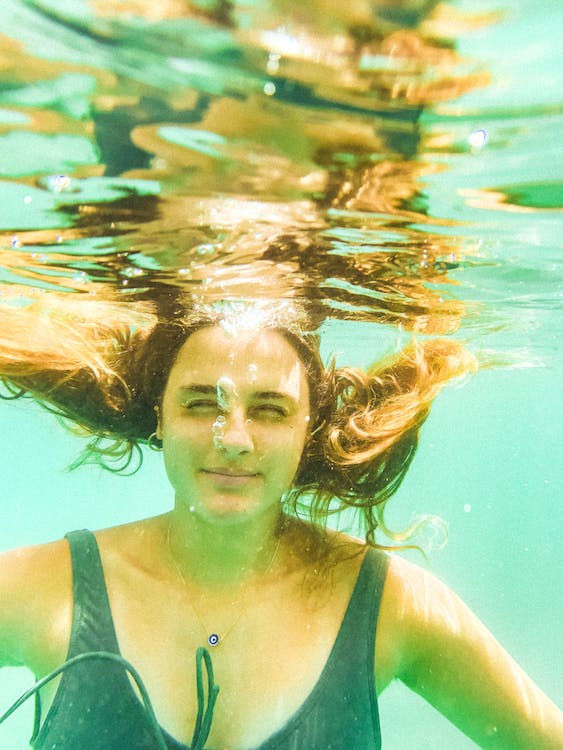
By manipulating the air expelled from your lungs, you develop a greater understanding of your own breath and become more competent at managing it while down under water.
This enhanced control can positively impact your overall swimming performance, allowing you to stay underwater longer and swim through the water with ease.
Moreover, bubble rings provide a unique opportunity for swimmers to explore their creativity.
Just like an artist crafting their masterpiece, you can experiment with different techniques, sizes, and patterns, creating your own signature bubble ring style.
It’s an artistic expression that allows you to fill your aquatic adventures with a touch of magic and wonder.
Lastly, mastering the art of making bubble rings is simply fun! It adds an element of playfulness to your underwater adventures, making every swim session an exciting and memorable experience.
Whether you’re practicing alone or engaging in friendly competitions with fellow swimmers, the joy and satisfaction of successfully creating a stunning bubble ring are phenomenal.
Mastering the Art of Making Bubble Rings
Making bubble rings is an art that combines skill, technique, and a touch of magic.
We will dive into the secrets of mastering the art of making bubble rings.
We will also explore the techniques that bring these supernatural creativity to life and understand the crucial role of breath control and buoyancy in achieving bubble ring mastery.
Techniques to Create Bubble Rings
Creating bubble rings requires mastering a few fundamental techniques. Let’s explore the step-by-step process to bring these underwater wonders to life:
- Find the Perfect Spot: Begin by choosing a calm area in the water, where there are minimal currents or disturbances. This will ensure better control over your bubble rings.
- Establish Neutral Buoyancy: Achieving neutral buoyancy is key to creating stable and well-formed bubble rings. Maintain a relaxed and buoyant position in the water by adjusting your breathing and body positioning.
- Take a Deep Breath: Take a slow and deep breath to fill your lungs with a substantial amount of air. This will provide you with the necessary volume to create a strong bubble ring.
-
Form the Air Bubble: Deep yourself just below the water’s surface and position your mouth slightly open, creating a small gap for the air to escape.
Gently release the air in the form of a bubble by controlling the airflow with your tongue and throat muscles. -
Shape the Bubble Ring: As the air bubble rises, use your hands or a specific hand gesture to shape it into a ring.
Cup your hands and guide the bubble to form a round and symmetrical ring. Experiment with different hand movements and techniques to create various ring sizes and shapes.
The Role of Breath Control and Buoyancy in Making Bubble Rings
Breath control and buoyancy play a vital role in mastering the art of making bubble rings. Let’s delve into their importance and how they contribute to your success:
- Breath Control:
The control and release of air from your lungs are crucial in creating well-formed bubble rings.
Slow and controlled exhalation allows for a continuous stream of air, ensuring the bubble’s stability and shape.
Practice regulating your breath to produce consistent and controlled airflow.
- Buoyancy Management:
Maintaining neutral buoyancy is essential to control your position in the water.
When your body is neutrally buoyant, you can move effortlessly and manipulate the air bubble more precisely.
Practice adjusting your body’s position and mastering buoyancy control techniques to enhance your bubble ring creation skills.
The Mysteries behind Bubble Rings
Bubble rings possess an elusive attractiveness that has fascinated both scientists and swimmers for generations.
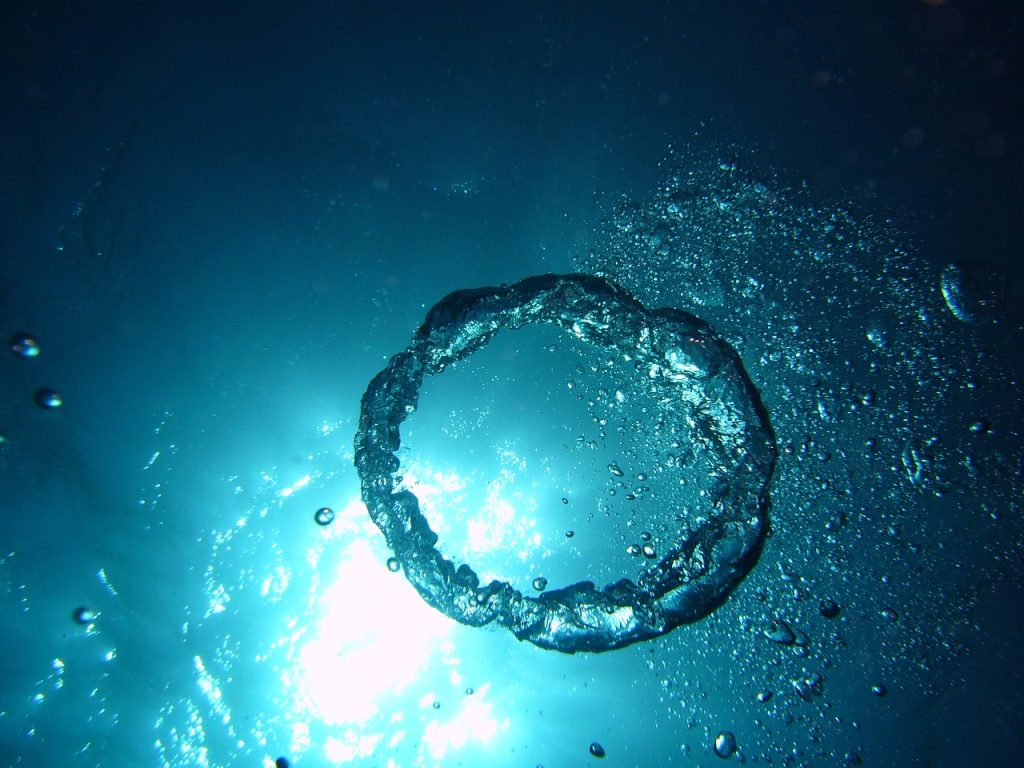
To understand their occurrence, we must dig into the various factors that contribute to their formation.
In the next section, we will explore the factors that contribute to bubble rings formation and also discuss the role of these factors.
Factors that Contribute to Bubble Ring Formation
Bubble rings are more than just random bubbles; they are carefully crafted and shaped by various factors.
Let’s explore the elements that come together to create these enchanting underwater marvels:
- Water Currents:
Water currents play a significant role in bubble ring formation.
When water flows in a circular motion or eddies are present, they create the perfect environment for bubble rings to form.
These currents help shape the air bubbles, allowing them to maintain their circular form and travel through the water.
- Swimming Movements:
The movements of a swimmer can influence the formation and rotation of bubble rings.
Rapid or forceful movements can disrupt the delicate balance required for the ring creation.
On the other hand, slow and controlled movements, combined with precise body positioning, can help generate stable and well-defined bubble rings.
READ ALSO: 5 Mind-blowing Facts About Females Swimming in Open Water
The Role of Water Currents and Swimming Movements in Bubble Ring Formation
To better understand the mysteries behind bubble rings, we must explore the specific roles that water currents and swimming movements play in their formation.
- Water Currents:
As mentioned earlier, water currents provide the necessary flow and shape for bubble rings to take form.
When a swimmer releases an air bubble into a current, it is gently carried along the circular path, maintaining its shape and stability.
The size and strength of the current can affect the size and longevity of the bubble ring.
- Swimming Movements:
The swimmer’s movements contribute to the creation and manipulation of bubble rings.
By controlling their body position and movements, swimmers can influence the size, shape, and stability of the rings they create.
Slow and smooth movements allow for better control and precision, resulting in well-formed rings.
The Science of Bubble Rings
To truly grasp the science behind bubble rings, we must go into the realm of physics, where intricate forces and properties shape their existence.
We will embark on the scientific exploration of bubble rings, uncovering the principles that bring them to life.
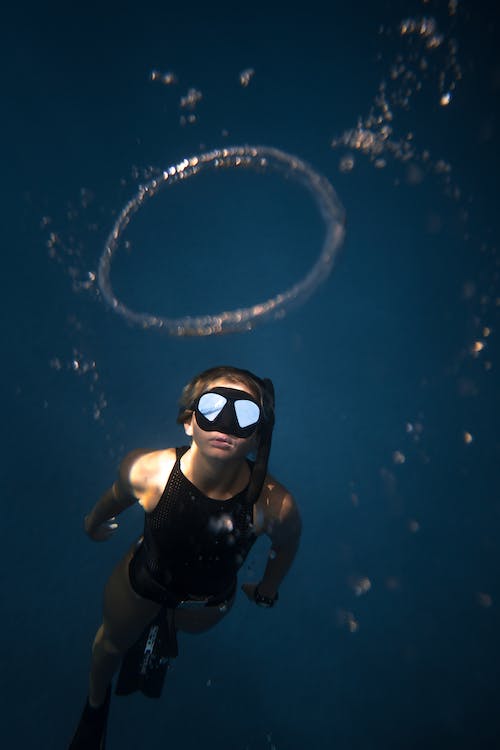
We will also explore the surface tension, vortices, and other scientific concepts that contribute to the creation of these wonderful rings.
Let’s unravel the physics behind these captivating phenomena.
The Physics behind the Formation of a Bubble Ring
- Surface Tension:
Surface tension is a fundamental concept that plays a crucial role in the formation of bubble rings. It is the property of a liquid’s surface that causes it to behave like a stretched elastic sheet.
When a swimmer releases an air bubble into the water, surface tension acts as a restraining force, allowing the bubble to maintain its spherical shape and preventing it from dispersing into smaller bubbles.
- Fluid Dynamics:
Fluid dynamics is the study of the motion and behavior of fluids, including liquids like water.
In the case of a bubble ring, fluid dynamics helps us understand the complex flow patterns and vortices that form as the air bubble rises through the water.
These vortices, which are swirling regions of fluid motion, contribute to the stability and shape of the bubble ring.
Scientific Concepts that Contribute to the Creation of a Bubble ring
To fully comprehend the science of bubble rings, we must explore the specific scientific concepts that are at play during their formation:
- Surface Tension and Elasticity:
Surface tension acts as a contractive force on the air bubble, pulling it inward and maintaining its spherical shape.
This elasticity of the bubble’s surface allows it to resist deformation and form a stable ring.
- Vortices and Ring Formation:
As the air bubble rises through the water, it creates a disturbance in the fluid, generating vortices. These vortices create a circular flow pattern around the bubble, shaping it into a ring.
The interaction between the vortices and the surface tension of the bubble determines the size, stability, and longevity of the resulting bubble ring.
- Fluid Mechanics:
Fluid mechanics studies the behavior of fluids under various conditions.
In the case of a bubble ring, fluid mechanics helps explain the intricate balance between the forces of buoyancy, surface tension, and the flow patterns within the water.
Understanding fluid mechanics aids in predicting and manipulating the characteristics of bubble rings.
READ ALSO: Why Swimmers Prefer Flower Swim Cap over Regular Swim Cap
Essential Skills and Tips to Become a Skilled Bubble Ring Artist
To become a skilled bubble ring artist, it takes more than just a flick of the wrist. It requires dedication, practice, skills and a touch of creativity.
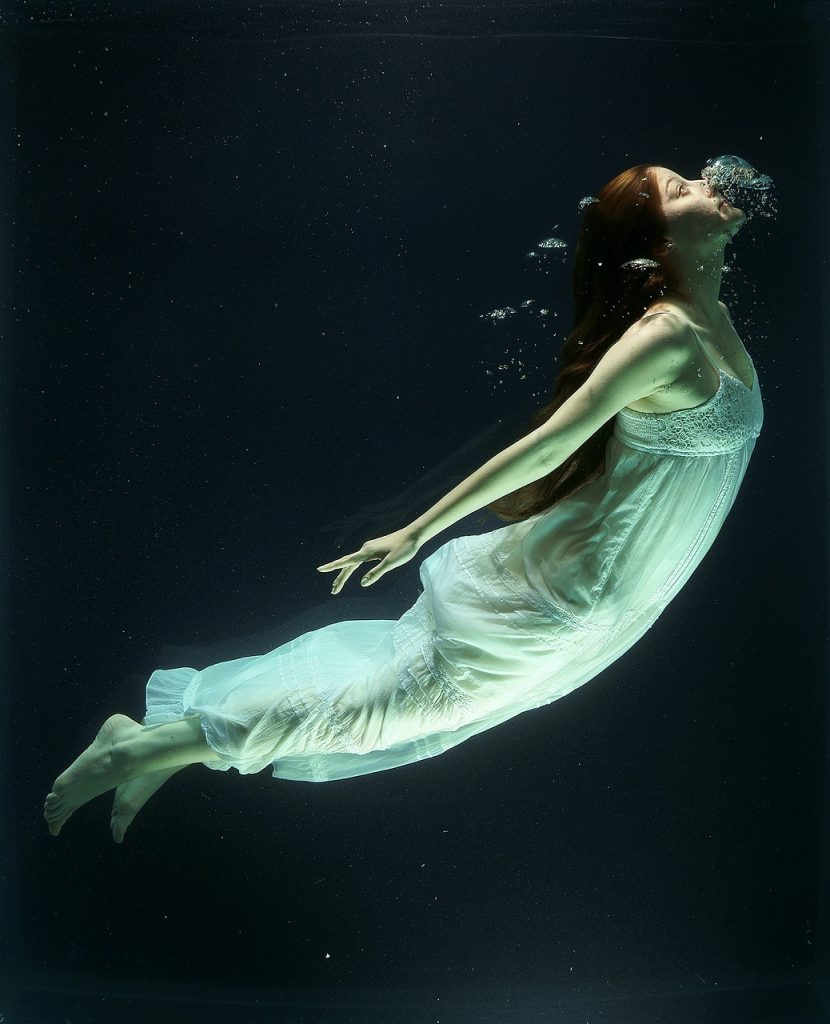
We will explore the essential skills and provide valuable tips for swimmers looking to enhance their bubble ring prowess.
The Importance of Practice and Perseverance
Becoming a skilled bubble ring artist is a journey that requires patience and perseverance. Here’s why practice is essential to hone your bubble ring skills:
-
Muscle Memory: Creating well-formed bubble rings requires precise control of your breathing, body positioning, and hand movements.
Through consistent practice, these actions become second nature, allowing you to execute them effortlessly. -
Refinement of Techniques: With each practice session, you can refine your techniques and discover what works best for you.
By experimenting and analyzing your results, you can make adjustments and improve your bubble ring creation skills.
Tips for Swimmers to Enhance Bubble Ring Skills
Ready to take your bubble ring skills to the next level? Consider these tips to enhance your artistic prowess:
- Master Breath Control:
Breath control is the foundation of creating remarkable bubble rings.
Practice slow and controlled exhalation, allowing for a steady stream of air to form a stable bubble.
Focus on regulating your breath and maintaining a consistent airflow.
- Fine-tune Body Positioning:
Experiment with different body positions to find the optimal posture for bubble ring creation.
Maintain a relaxed and buoyant state in the water, allowing for better control and precision in shaping the rings.
- Experiment with Hand Movements:
The manipulation of your hands plays a crucial role in shaping the bubble rings.
Try various hand movements, such as cupping your hands or using a specific gesture, to guide the bubble and create different sizes and shapes of rings.
Find the techniques that feel most comfortable and effective for you.
Additional Tips and Tricks for the Ring Mastery
As you continue on your journey to becoming a skilled bubble ring artist, consider these additional tips and tricks to improve your mastery:
-
Explore Underwater Lighting: Playing with underwater lighting can enhance the visual impact of your bubble rings.
Experiment with different lighting conditions and angles to create mesmerizing effects and capture stunning photographs or videos. -
Embrace Creativity: Bubble ring artistry is not just about creating rings, it’s about embracing your creativity and incorporating unique elements.
Experiment with incorporating objects, colors, or even combining bubble rings with other underwater movements to create captivating visual displays.
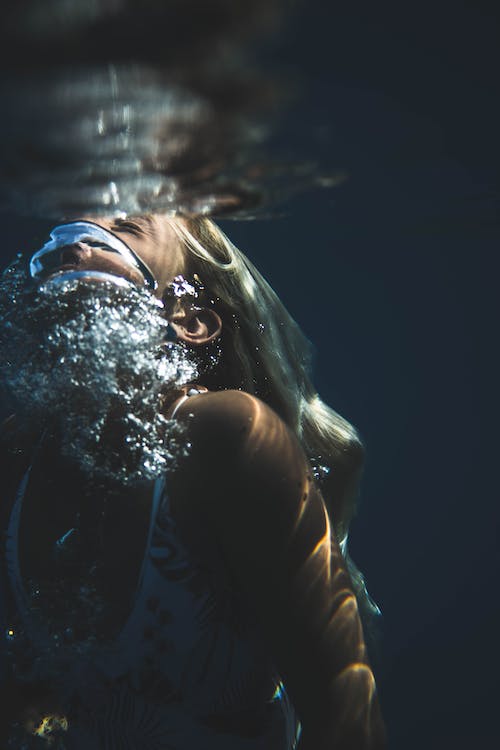
Advantages and Disadvantages of Making Bubble Rings Underwater
While it may seem like an enchanting art form, it’s important to consider both the advantages and disadvantages of creating bubble rings underwater.
We will delve into the pros and cons, allowing you to make an informed decision as you embark on your underwater bubble ring adventures.
Advantages of Making Bubble Rings Underwater
-
Mesmerizing Visual Display: One of the main advantages of making bubble rings underwater is the captivating visual display they create.
The rings gracefully float and glide through the water, mesmerizing both the creator and any observers. It adds a touch of magic to your underwater experience. -
Relaxation and Meditation: Engaging in the art of making bubble rings can be a meditative and relaxing experience.
The focus required to control your breath, body positioning, and hand movements can help calm the mind and provide a sense of tranquility. It serves as a unique form of underwater mindfulness. -
Skill Development: Creating well-formed bubble rings requires mastery of breath control, body positioning, and hand coordination.
Engaging in this activity helps develop important skills such as breath control, fine motor skills, and patience. It can also improve your overall swimming technique and water awareness.
Disadvantages of Making Bubble Rings Underwater
-
Disturbance to Marine Life: While making bubble rings underwater can be an enjoyable activity, It is crucial to consider its impact on marine life.
The disturbances caused by rapid hand movements or excessive bubble production may disrupt the natural environment and potentially stress or disturb marine organisms.
It is important to practice responsibly underwater activities and minimize any negative impact.
-
Consumes Air Supply: Creating bubble rings requires exhaling a significant amount of air, which can deplete your lung capacity and reduce your overall air supply.
This limitation can affect the duration of your underwater exploration and potentially limit your time for other activities such as diving or swimming longer distances. -
Limited Visibility: When actively creating bubble rings, the bubbles themselves can obstruct your visibility underwater.
This reduced visibility may limit your ability to navigate or appreciate the surrounding environment fully.
It’s important to strike a balance between enjoying the art of bubble rings and maintaining situational awareness in the water.
READ ALSO: 6 Essential Swimmer’s Shoulder Stretching Exercises to Relieve Swimmer’s Shoulder Pain
Safety Tips to Consider for Mastering Bubble Rings
I know you want to enjoy the fun and experience of mastering this exciting swimming skill. However, it’s essential to prioritize safety to ensure an enjoyable and risk-free experience.
Below are important safety tips to consider as you embark on your journey to master the skill. By following these guidelines, you can enhance your skills while keeping yourself and others safe in the water:
-
Choose a Suitable Environment: Select a calm and controlled underwater environment for practicing your skill.
Avoid areas with strong currents, rough waves, or hazardous underwater conditions. This ensures optimal safety and reduces the risk of accidents or injuries. -
Practice Proper Buoyancy Control: Maintain neutral buoyancy while creating bubble rings to optimize control and stability.
Achieving neutral buoyancy allows you to focus on the artistry of mastering the rings technique without compromising your safety or disturbing the surrounding environment. -
Be Mindful of Water Depth: Consider the depth of the water you are practicing in. Ensure that the water is of a suitable depth to accommodate your movements comfortably.
Shallow water can increase the risk of accidental collisions, while excessively deep water may pose challenges in maintaining control and visibility. -
Master Breathing Techniques: Develop strong breath control to sustain long breath-holds while creating the rings.
Proper breathing techniques enhance your underwater experience by reducing the risk of hyperventilation or oxygen deprivation.
Practice controlled inhalation and exhalation to optimize breath duration. -
Maintain Situational Awareness: Always remain aware of your surroundings while creating your rings underwater.
Avoid colliding with other swimmers, marine life, or underwater obstacles.
Maintain a clear line of sight and be mindful of potential hazards, such as rocks, sharp objects, or entanglement risks. -
Respect Marine Life: Responsible underwater practices include respecting marine life. Avoid creating excessive disturbances or alarming marine organisms with rapid or forceful movements.
Observe and appreciate marine life from a respectful distance, ensuring their well-being is not compromised. -
Use Appropriate Gear: Consider using appropriate gear for your skill practice.
Snorkeling or diving equipment, such as a mask, snorkel, and fins, can enhance your safety and comfort in the water. Choose gear that fits properly and is in good condition. -
Buddy System: Engaging in any water activity is always safer with a buddy. Practice bubble rings with a friend or if you have someone nearby who can assist if needed.
The buddy system adds an extra layer of safety and support, ensuring help is readily available in case of an emergency. -
Gradual Progression: Take a gradual approach to mastering your rings skill. Start with basic techniques and gradually progress to more advanced maneuvers as your skills improve.
This step-by-step approach minimizes the risk of overexertion or attempting complex moves before you are ready.

Conclusion
In conclusion, mastering the art of making a bubble ring underwater as a swimmer is a captivating skill that combines elegance and playfulness.
By following the above-mentioned key techniques and practicing regularly, you can boost your underwater experience to a whole new level.
Note that, it’s important to perfect your breath control. Practice deep inhales and slow, controlled exhales to create the ideal air flow for forming bubble rings.
Remember to relax and maintain a steady rhythm as you blow the air out.
Consistency is key when it comes to mastering this art. Dedicate regular practice sessions to refine your technique and build muscle memory.
As with any skill, the more you practice, the better you’ll become. Experiment with different depths, angles, and lighting conditions to create mesmerizing bubble rings that reflect your unique style.
So dive in the water, explore, and let your bubble rings mesmerize and inspire all those fortunate enough to witness them.
